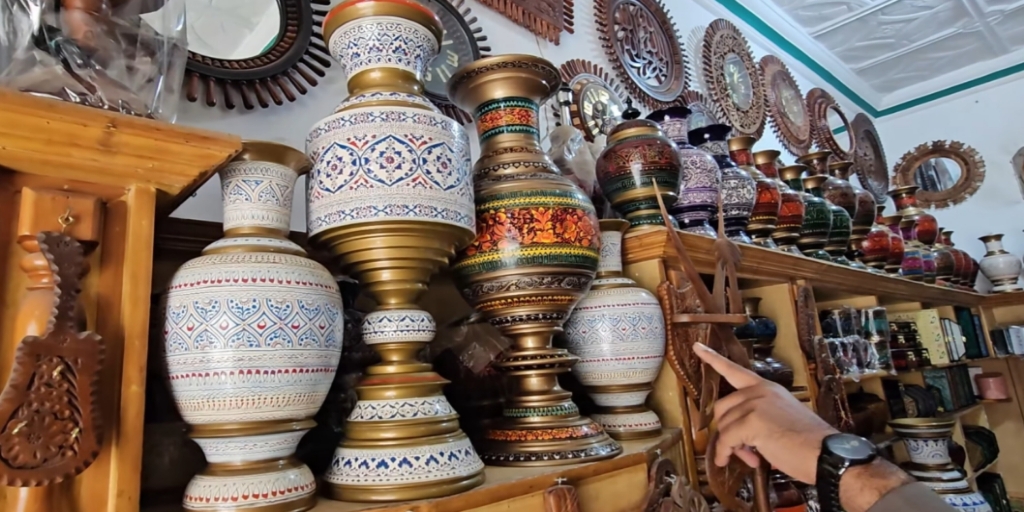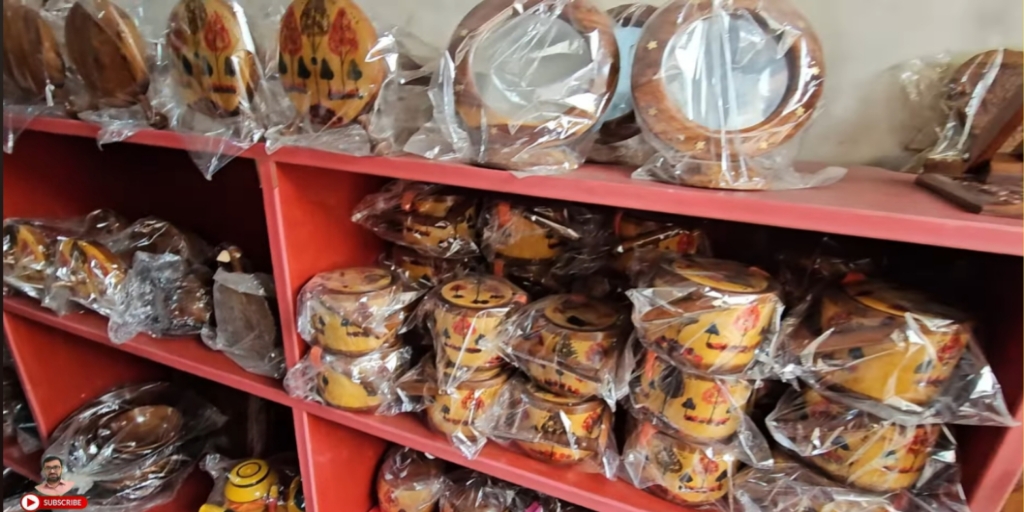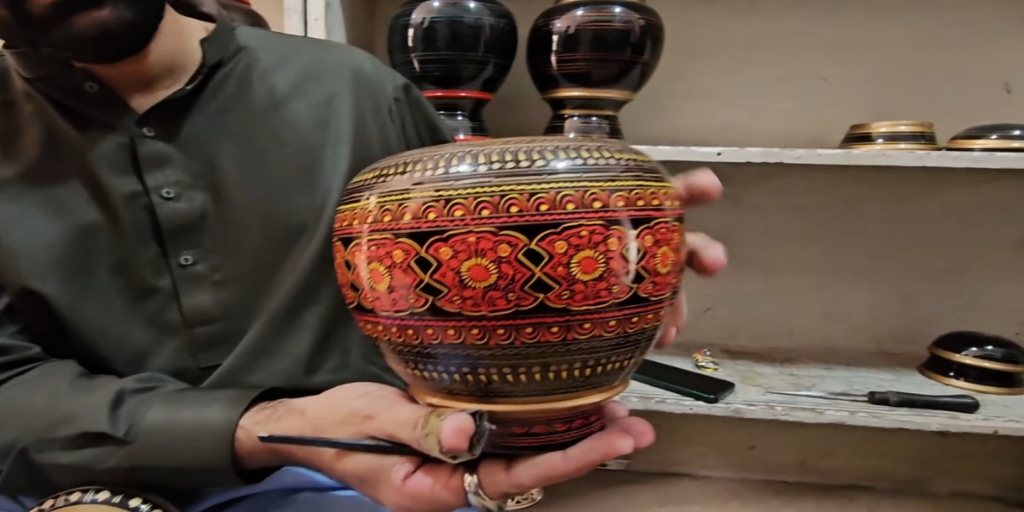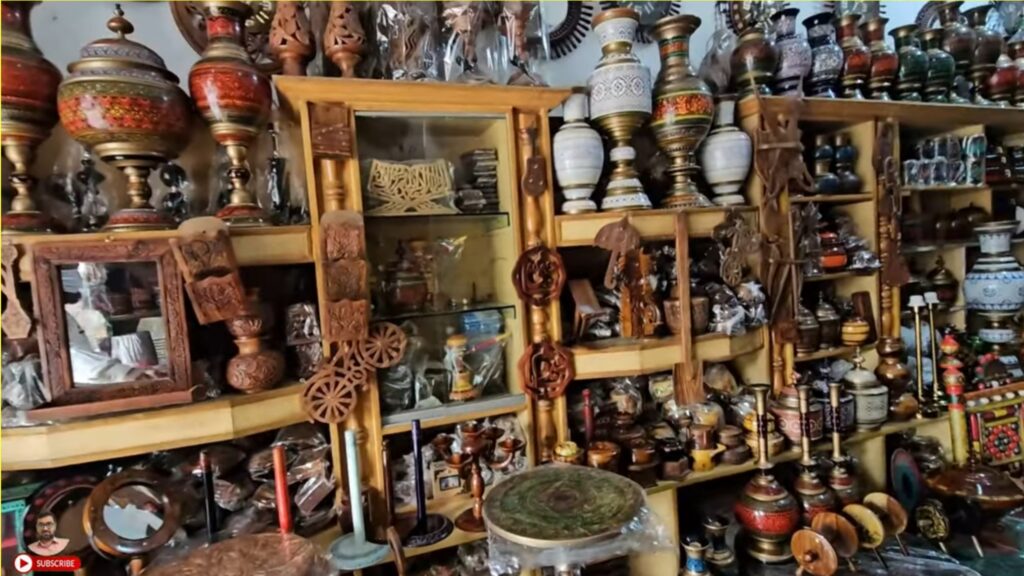India, the land of diversity, is home to a kaleidoscope of handicraft traditions that echo through the corridors of history. Every region in the country contributes a unique flavor to the grand canvas of Indian craftsmanship, shaped by centuries of culture, rituals, royal patronage, and indigenous talent. The famous handicrafts of India not only reflect artistic brilliance but also provide livelihood to millions. In this comprehensive guide, we delve deep into the most iconic handicrafts of India, their origins, materials, techniques, and the regions they represent.





Terracotta and Pottery – The Earthy Art of Indian Soil
One of the oldest handicrafts known to civilization, terracotta and pottery have adorned Indian households for millennia. From the Indus Valley Civilization to the rural heartlands of present-day India, clay art is deeply woven into our cultural fabric.
Key Centers:
- Khurja (Uttar Pradesh) – Famous for blue pottery.
- Molela (Rajasthan) – Known for relief terracotta plaques.
- Kutch (Gujarat) – Rich black pottery tradition.
These handcrafted wares are not just decorative but often functional, ranging from kitchen pots, vases, and idols to decorative tiles.
Pashmina Shawls – The Soft Embrace of Kashmir
Kashmir’s legendary Pashmina wool is derived from the undercoat of the Changthangi goat, found only in the high altitudes of Ladakh. The process of hand-weaving Pashmina shawls is a centuries-old tradition involving intricate handwork and artistic finesse.
Notable Features:
- Hand-spun and hand-woven.
- Exquisite embroidery known as Sozni and Kani weaving.
- Takes weeks or even months to complete a single shawl.
These luxurious shawls are prized across the globe for their softness, warmth, and heritage.
Madhubani Painting – Colors of Mithila
Madhubani, or Mithila painting, is a folk art form practiced in the Mithila region of Bihar. These paintings, traditionally created by women, depict themes of mythology, nature, and daily life.
Artistic Elements:
- Use of natural dyes and pigments.
- Depictions of Hindu deities, animals, and floral patterns.
- Painted on walls, paper, cloth, and even household items.
The bold lines and vibrant colors of Madhubani art have earned it a global following.
Channapatna Toys – Karnataka’s Wooden Marvels

Nestled in Karnataka, Channapatna is renowned for its colorful, eco-friendly wooden toys and dolls. Known as the “Toy Town of India,” artisans here use a unique lacquerware technique passed down through generations.
Craftsmanship Highlights:
- Made from Wrightia tinctoria (ivory wood).
- Natural dyes and food-safe colors.
- Smooth polished finish using traditional lac-turnery.
These toys not only delight children but also serve as cherished décor pieces.
Zardozi Embroidery – Regal Threads of Gold and Silver
Originating in the Mughal era, Zardozi embroidery is a rich form of needlework where metallic threads of gold, silver, and copper are woven into fabrics like silk, velvet, and satin.
Popular Centers:
- Lucknow, Delhi, Bareilly, Hyderabad.
Key Characteristics:
- Ornate patterns of birds, flowers, and geometric motifs.
- Often embellished with pearls, beads, and sequins.
- Traditionally used for royal garments, wedding attire, and ceremonial décor.
This intricate handiwork continues to dazzle in bridal couture and high fashion.
Bidriware – The Black Beauty of Bidar
From the town of Bidar in Karnataka comes a distinct metal handicraft called Bidriware, characterized by its blackened alloy of zinc and copper inlaid with silver.
Unique Attributes:
- Rooted in Persian art.
- Black hue achieved through the application of a special soil.
- Designs feature floral and geometric patterns, Mughal motifs.
Used in vases, hookahs, jewelry boxes, and home decor, Bidriware is a testament to timeless elegance.
Phulkari – Floral Embroidery of Punjab
Phulkari, meaning “flower work”, is a vibrant and expressive embroidery style from Punjab. Traditionally made by women for household and ceremonial use, Phulkari has become a cultural emblem of the region.
Defining Features:
- Geometric floral motifs.
- Silk thread on coarse cotton (khaddar).
- Embroidery done from the reverse side of the fabric.
Today, Phulkari is used in shawls, dupattas, jackets, and home accessories.
Bamboo and Cane Work – The Green Art of the Northeast
The lush landscapes of Northeast India have nurtured bamboo and cane crafts for centuries. These eco-friendly handicrafts are both beautiful and utilitarian.
Major Regions:
- Assam, Tripura, Manipur, and Meghalaya.
Product Range:
- Baskets, mats, trays, furniture, and decorative items.
- Lightweight, durable, and biodegradable.
These crafts promote sustainable living while preserving tribal traditions.
Kalamkari – Storytelling Through Fabric
Kalamkari, literally meaning “pen craft,” is a hand-painted or block-printed textile tradition from Andhra Pradesh and Telangana. It uses a bamboo or date palm pen (kalam) and natural dyes to depict epic narratives and folklore.
Styles:
- Machilipatnam (block printing)
- Srikalahasti (freehand painting)
Kalamkari motifs include characters from Ramayana, Mahabharata, and nature-inspired patterns, often showcased in sarees, wall hangings, and home furnishings.
Dhokra Art – Tribal Metal Magic
Dhokra is an ancient tribal metal casting technique using the lost-wax process, practiced predominantly in Chhattisgarh, Odisha, and West Bengal.
Signature Traits:
- Made from non-ferrous metals like brass.
- Depictions of animals, tribal deities, and rural life.
- Unpolished, rustic charm.
Every Dhokra piece is unique and handmade, often taking weeks to complete.
Rogan Painting – Kutch’s Hidden Gem
A rare art form kept alive by a single family in Nirona village of Kutch, Rogan painting uses castor oil-based paint and metal styluses to draw intricate patterns on fabric.
Features:
- Typically done on dark cloth.
- Symmetrical designs of trees of life, peacocks, and florals.
- Requires immense patience and precision.
This endangered craft has even reached global platforms, including presentations to world leaders.
Pattachitra – Scrolls of Divine Stories
Pattachitra, meaning “cloth painting,” is a traditional art of Odisha and West Bengal, showcasing mythological themes and folklore.
Visual Style:
- Bold outlines, intricate borders.
- Use of conch shells, minerals, and vegetable colors.
- Stories of Lord Jagannath, Krishna Leela, and tribal life.
This craft involves the entire family in its creation, keeping community traditions alive.
Conclusion: The Soul of Indian Handicrafts
Indian handicrafts are not just artistic creations; they are living legacies of our ancestral skills, regional identities, and cultural heritage. From the royal courts of Rajasthan to the tribal hamlets of Bastar, each piece tells a story of dedication, craftsmanship, and passion.
By supporting these arts, we preserve not only history but also provide economic empowerment to millions of artisans. Whether you are a collector, a traveler, or a lover of heritage, Indian handicrafts offer a rich tapestry of expression that deserves global admiration.
